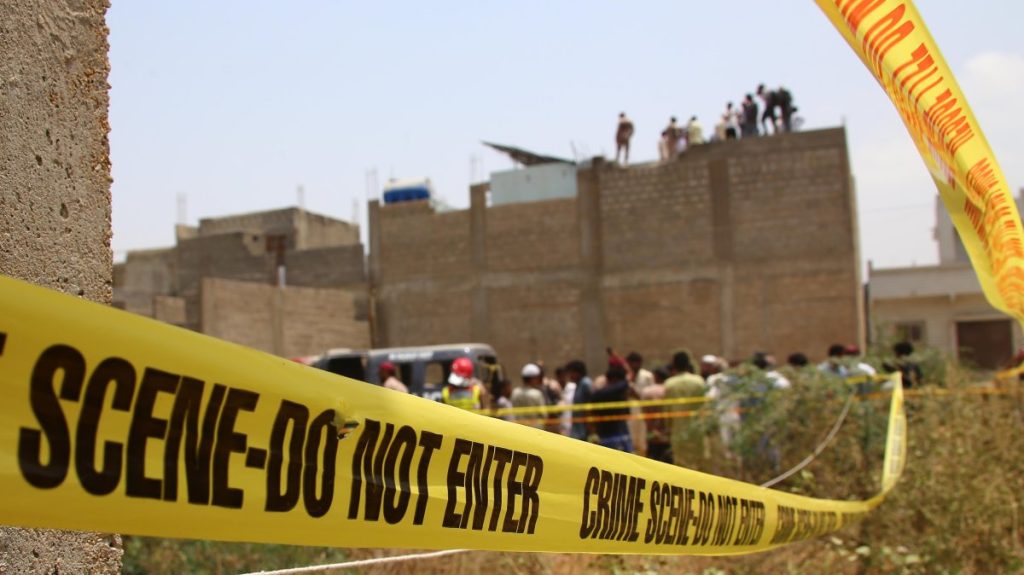The Pahalgam tragedy triggered a four-day conflict between India and Pakistan, marking one of the most intense escalations in recent South Asian history. On the night of May 6-7, 2025, India launched an attack on Pakistan and its administered part of the disputed state of Jammu and Kashmir. India claimed it had targeted alleged terrorist camps in eight different locations across Pakistan and the disputed region under an operation named “Sindoor.” However, independent reports confirmed that only civilians, including children, were killed in these strikes.
In immediate retaliation, Pakistan responded forcefully. Within minutes, a 59-minute dogfight ensued between the two air forces, during which Pakistan shot down five Indian jets, including two French-made Rafale fighters. India retaliated again by targeting various locations within Pakistan, including the Nur Khan Air Base in Rawalpindi, but failed to inflict any significant damage.
Meanwhile, Pakistan successfully shot down hundreds of Israeli-made Indian drones flying deep into its mainland. It also launched “Operation Bunyan ul Marsoos” (meaning “Iron Wall”), striking critical Indian military targets. These included Brahmos missile sites, several Indian air bases, and even reportedly damaged the Russian-made S-400 air defense system – India’s prized asset. On the ground, Pakistani land forces also reportedly captured multiple Indian posts across the Line of Control (LoC) in Indian-administered Kashmir.
As the conflict intensified, global concern mounted. On the fourth day of hostilities, May 10, 2025, U.S. President Donald Trump intervened, at India’s request, and brokered a cease-fire after extensive consultations with both sides.
This brief but intense clash left a profound impact on regional and global geopolitics, shifting the balance of power and highlighting new strategic alignments. The war showcased the technological dependence of India and Pakistan on external powers. While India relied heavily on Western technology, including French Rafales and Israeli drones, Pakistan operated with Chinese and Turkish military systems. Pakistan not only matched but outmaneuvered India in air combat and cyber warfare, even managing to hack sensitive communications of Indian forces, an act that tipped the military balance in its favor.
Additionally, the conflict also exposed the strategic miscalculations of the United States, which had long sought to project India as a counterbalance to China in the region. The U.S. initially refrained from intervening, assuming India’s conventional superiority would ensure its dominance over Pakistan. However, India’s underperformance, particularly against a smaller neighbor, led Washington to reconsider. Under pressure from its strategic partner India, the U.S. was forced to intervene diplomatically. This episode may well lead to a recalibration of U.S. policy in South Asia, particularly regarding its over-reliance on India as a regional power.
On the other hand, China reaffirmed its position as Pakistan’s all-weather ally, providing both military and technological support. The conflict offered China an opportunity to test its weapon systems in a real combat environment – an opportunity it seized through Pakistan. Pakistani forces reportedly handled Chinese technology with high levels of professionalism, proving it effective against Western military systems and reinforcing China’s role as a viable alternative to Western defense suppliers.
India’s earlier diplomatic campaign to isolate Pakistan also faced a debacle. Instead of isolation, Pakistan gained significant diplomatic backing from countries such as Türkiye, Azerbaijan and Bangladesh. Notably, the U.S. response this time was more measured compared to its support for India during the Pulwama-Balakot crisis in 2019. Moreover, Russia, the United Nations and other countries responded favorably to Pakistan’s call for an independent investigation into the Pahalgam incident.
Furthermore, the crisis has once again brought global attention to the core issue between India and Pakistan: Kashmir. Until this longstanding dispute is resolved, the threat of escalation, including nuclear conflict, remains real. Former U.S. President Bill Clinton once rightly referred to it as a nuclear flashpoint. India’s unilateral actions, such as the abrogation of Articles 370 and 35A, have altered the region’s demography in violation of U.N. resolutions, fueling further instability. The international community, particularly the U.N. and major powers, must play a more active and balanced role in compelling India to engage in responsible and meaningful dialogue.
Lastly, the outcome of this conflict may cause smaller South Asian states to reevaluate their regional alignments. India’s perceived military and diplomatic setbacks could drive these nations to explore alternative partnerships, particularly with China, whose strategic relationship with Pakistan appears more pragmatic and effective. The growing China-Pakistan nexus is likely to shape future regional power configurations in South Asia.


